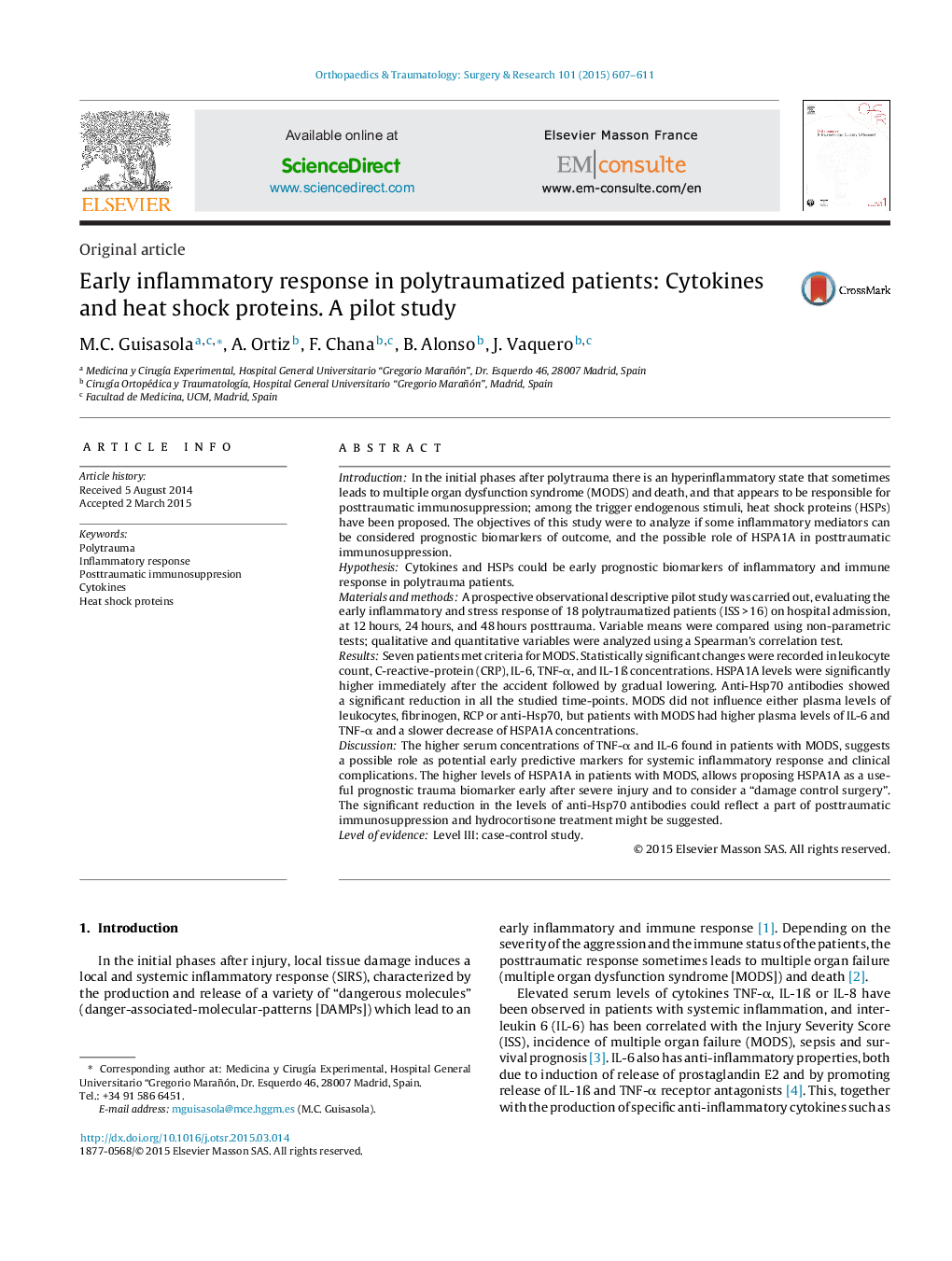| کد مقاله | کد نشریه | سال انتشار | مقاله انگلیسی | نسخه تمام متن |
|---|---|---|---|---|
| 4081054 | 1267577 | 2015 | 5 صفحه PDF | دانلود رایگان |
IntroductionIn the initial phases after polytrauma there is an hyperinflammatory state that sometimes leads to multiple organ dysfunction syndrome (MODS) and death, and that appears to be responsible for posttraumatic immunosuppression; among the trigger endogenous stimuli, heat shock proteins (HSPs) have been proposed. The objectives of this study were to analyze if some inflammatory mediators can be considered prognostic biomarkers of outcome, and the possible role of HSPA1A in posttraumatic immunosuppression.HypothesisCytokines and HSPs could be early prognostic biomarkers of inflammatory and immune response in polytrauma patients.Materials and methodsA prospective observational descriptive pilot study was carried out, evaluating the early inflammatory and stress response of 18 polytraumatized patients (ISS > 16) on hospital admission, at 12 hours, 24 hours, and 48 hours posttrauma. Variable means were compared using non-parametric tests; qualitative and quantitative variables were analyzed using a Spearman's correlation test.ResultsSeven patients met criteria for MODS. Statistically significant changes were recorded in leukocyte count, C-reactive-protein (CRP), IL-6, TNF-α, and IL-1ß concentrations. HSPA1A levels were significantly higher immediately after the accident followed by gradual lowering. Anti-Hsp70 antibodies showed a significant reduction in all the studied time-points. MODS did not influence either plasma levels of leukocytes, fibrinogen, RCP or anti-Hsp70, but patients with MODS had higher plasma levels of IL-6 and TNF-α and a slower decrease of HSPA1A concentrations.DiscussionThe higher serum concentrations of TNF-α and IL-6 found in patients with MODS, suggests a possible role as potential early predictive markers for systemic inflammatory response and clinical complications. The higher levels of HSPA1A in patients with MODS, allows proposing HSPA1A as a useful prognostic trauma biomarker early after severe injury and to consider a “damage control surgery”. The significant reduction in the levels of anti-Hsp70 antibodies could reflect a part of posttraumatic immunosuppression and hydrocortisone treatment might be suggested.Level of evidenceLevel III: case-control study.
Journal: Orthopaedics & Traumatology: Surgery & Research - Volume 101, Issue 5, September 2015, Pages 607–611
